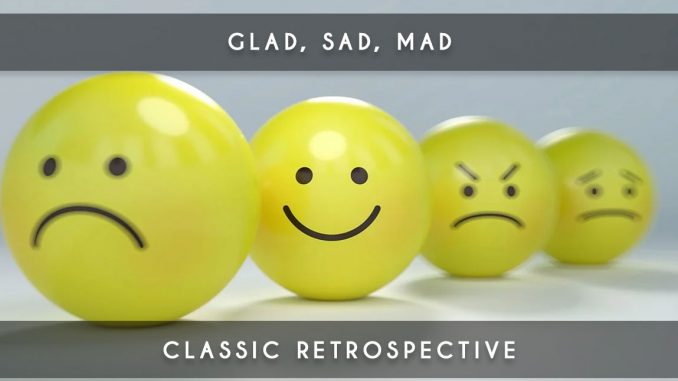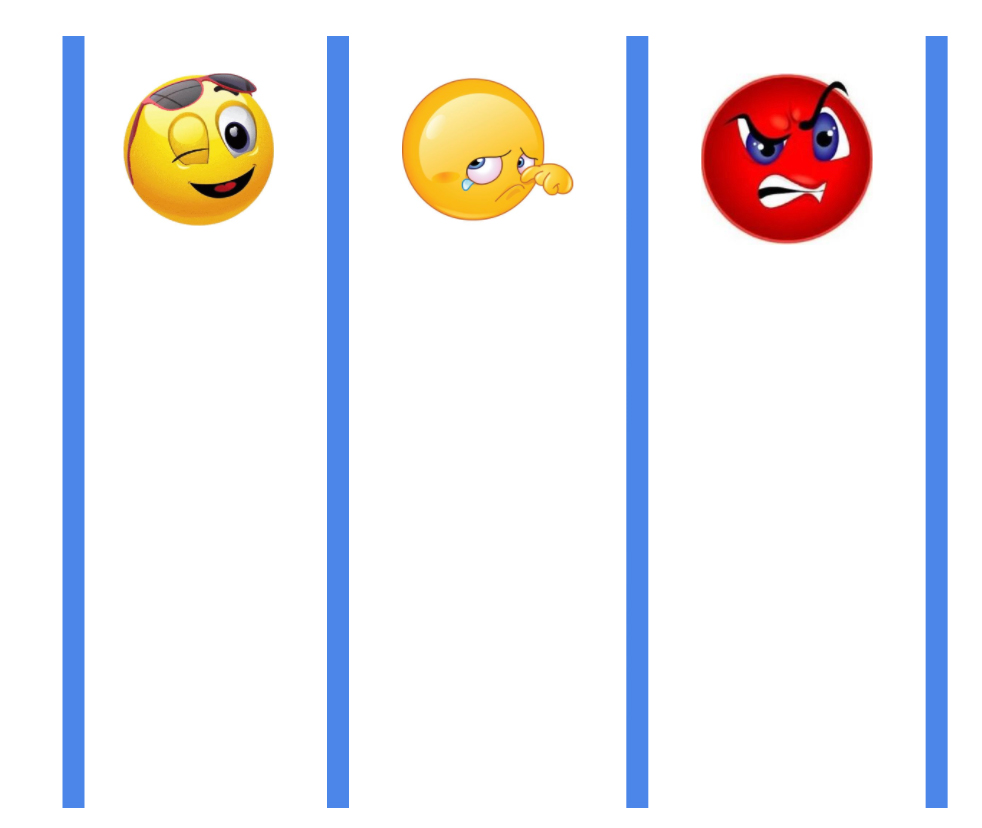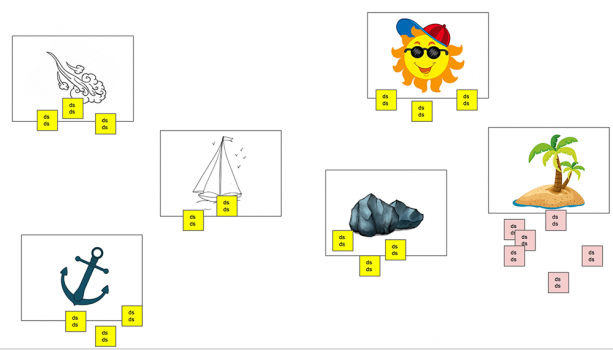
Exploring the Classic “Glad, Sad, Mad” Scrum Retrospective
Let’s delve into a widely known and embraced retrospective format in the Scrum world: “Glad, Sad, Mad.” Though relatively straightforward, this retrospective is incredibly effective in bringing out valuable insights.
For more retrospective ideas, you can explore our collection on our dedicated page: [Our Retrospectives](https://www.myagilepartner.com/blog/index.php/retrospectives-blog/)
Materials Needed for “Glad, Sad, Mad” Retrospective
This retrospective requires minimal materials:
- Square post-it notes
- Pens
- Small board (paper board or whiteboard)
The total time required for this retrospective is approximately 30 minutes.
Step-by-Step Process
As a well-known classic in retrospectives, this workshop aids in identifying improvement axes for the upcoming sprint.
The Scrum Master will draw three separate columns on the board or craft paper on the wall. At the top of each column, place a post-it note with a happy smiley, a sad smiley, and a mad smiley from left to right.
Here’s the visual representation you aim to achieve:

Step 1: Sharing Emotions
Allocate 5 minutes for participants to use a different color of post-it notes to express what made them feel happy, sad, or mad during the sprint. Each post-it note should contain only one idea. If a participant has multiple ideas, they can use multiple post-it notes. There’s no limit to the number of post-it notes used.
Duration: 5 minutes
Step 2: Collective Discussion
During this phase, the Scrum Master takes 10 minutes to read aloud what each member has posted. If any post-it note’s content is unclear, the person who wrote it briefly elaborates on their idea. The Scrum Master also groups similar ideas to enhance readability.
Duration: 10 minutes
Step 3: Proposed Improvements
Allocate 5 minutes for participants to write down improvement axes on post-it notes. Each participant can put forward one idea per post-it note. All participants will then briefly explain their proposed improvements.
Duration: 10 minutes
Step 4: Defining Improvement Axes
Conduct a Dot Voting session to determine the top 3 improvement axes the team will focus on in the next sprint. These axes are indicated by the “idea” section at the bottom right of the learning matrix.
The Scrum Master should remind participants to select a volunteer responsible for monitoring the implementation of these improvement axes. Empowerment is crucial to ensuring that the improvement axes are actively pursued beyond the retrospective.
Duration: 10 minutes
Conclusion: “Glad, Sad, Mad”
This highly regarded retrospective is simple, engaging, and efficient in delivering valuable insights. It’s an excellent choice for teams that prefer retrospectives with a familiar format.
Useful link: [Retrospective in French](https://blog.myagilepartner.fr/index.php/retrospective/)




Be the first to comment